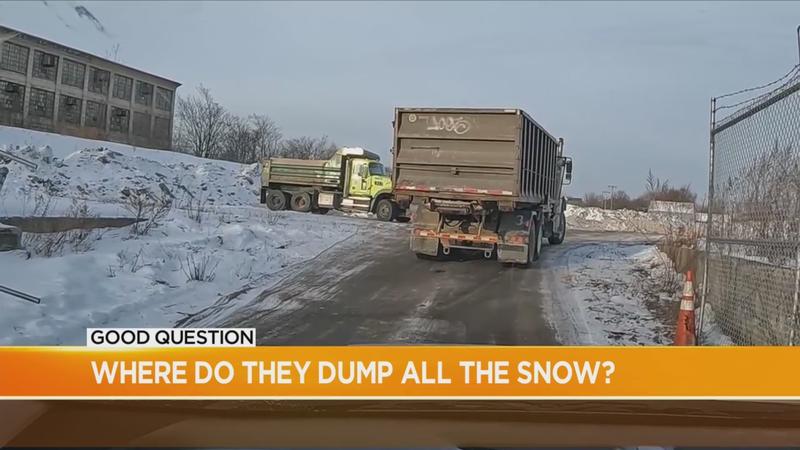Good Question: Where do they dump all the snow?
[anvplayer video=”5090592″ station=”998131″]
ROCHESTER, N.Y. (WHEC) — City crews have been out this week taking huge mounds of snow off sidewalks and streets. They are loading it on dump trucks.
Where does it all end up?
If your first thought is — that’s easy, the Genesee River — that answer used to be yes but not anymore.
See, this good question comes up during clean up times like this week, when we saw trucks and bulldozers loading up snow piles along East Avenue. We followed the trucks to see where they were going. They put the snow in an empty city lot on Orchard Street over by the old soccer stadium.
That’s a preferred practice, not just for Rochester, but everywhere under state guidelines. Those haven’t even been around that long.

News10NBC’s Brennan Somers found them and caught up with the State Department of Environmental Conservation.
The first rules of their kind for the DEC were issued in 2017.
Can towns and cities dump excess snow in rivers or creeks? Yes, really as a last resort.
The issue of course is, think of everything piled in snow banks. There’s salt, oil, grease, litter, and other trash we don’t need in our waters.
The DEC says crews should aim to put mountains of snow in places like a parking lot, parks, even golf courses. The DEC calls those ‘upland storage areas’.
Yes, it will all eventually melt, but in smaller amounts over time. The regulations also say you need to set up silt fences or gravel berms to catch unwanted material as it melts. If that’s still not enough and removal is becoming a safety issue, then snow can go right into the water.
Having said all that, if you have what qualifies as "heavily contaminated snow", it can’t go in waterways. Period.
And again, in Rochester while they may have put some snow in the river in years past, they don’t do it now. They haven’t since 2015 over ice jam concerns.
The snow currently goes to four lots for melting.